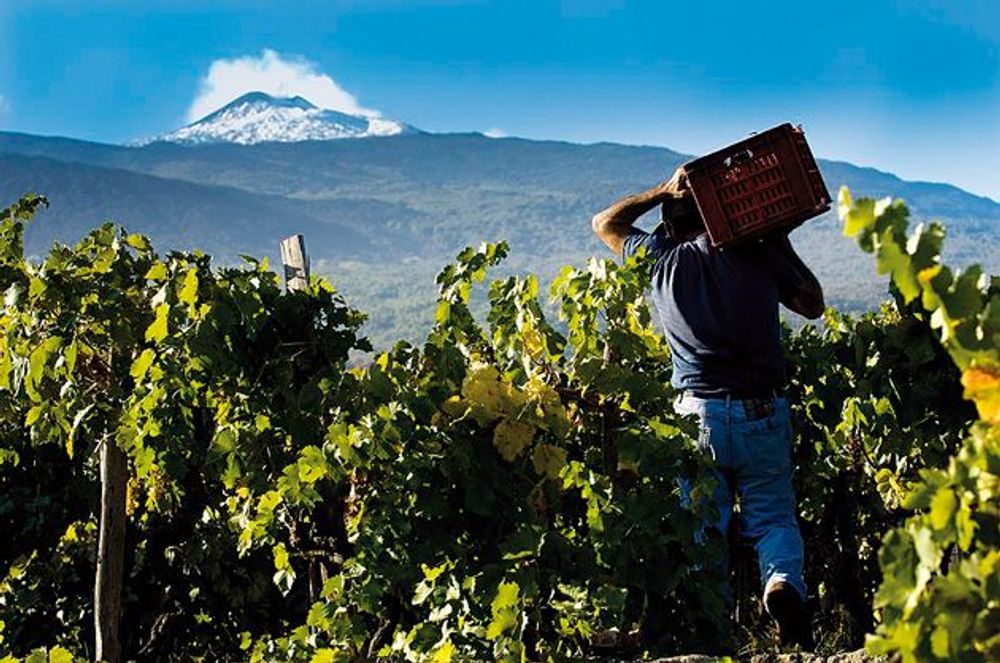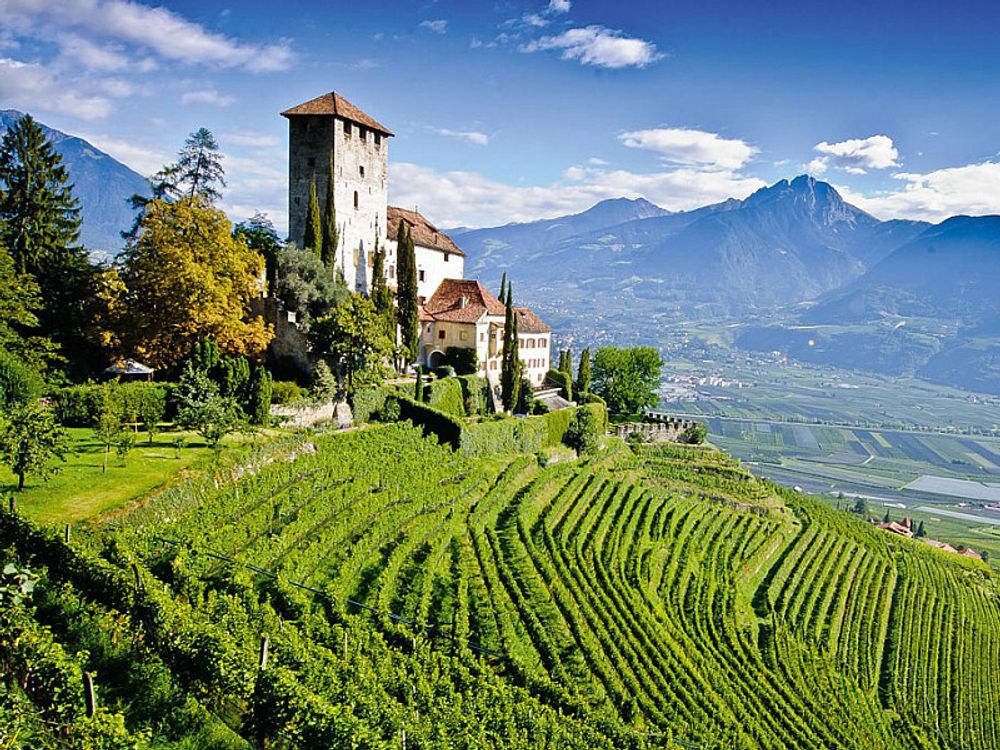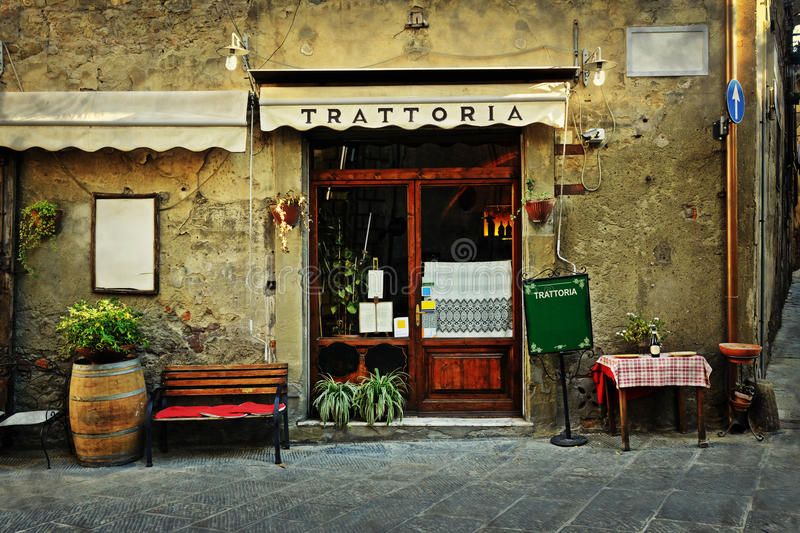Even with a poor 2017 harvest Italy continues to be the gift that keeps on giving when it comes to sourcing a seemingly bottomless pit of different wine styles, varieties, regions and price points to keep both trade buyers, restaurateurs and sommeliers happy.

Is there anything better than a big Italian dinner with friends?
It’s probably a little out of date considering the number of store closures this year to still describe the UK as a nation of shopkeepers. It’s probably more accurate to look at Britain through the number of fast food outlets, kebab shops and restaurants that are dotted up and down the average British high street.
Drill down a little further as to what sort of restaurants we have then leading the way is Italy. We simply can’t get enough of them. Whether they come in the form of a casual dining chain, from Pizza Express to Zizzi, to the legion of local Italian restaurants that are the heart of so many neighbourhoods, through to some of the finest establishments in the country.
Which, perhaps not surpisingly, has resulted in Italian wine being the biggest selling and most popular country of wine to go to on a night out. Whether you are drinking Italian or not.
So with such a vital category to look after it’s important we keep on top of what is selling or not, and why. To help us, let’s look back at last month’s debate, hosted by The Buyer, at the Bellavita Italian food and wine fair in London, featuring a number of senior buyers and executives from some of the UK’s biggest and most respected suppliers of Italian wine to the on-trade.
Nowhere bettter
First out of the blocks is John Graves, on-trade development director of Bibendum, who could not be more enthusiastic about the opportunity that Italian wine still offers distributors and restaurants alike.
“It’s probably the most exciting it has been for Italy in the on-trade at the moment,” says Graves. “If you are a sommelier and putting together a wine list, then Italy is just a treasure chest of wine. It’s fantastic.”
What’s more it’s not just the quality of wine that Graves believes gives Italy the edge. But the prices it can offer .
“For value for money is the best in the world,” claims Graves. “It has taken over the New World in terms of offering value.”

Graves could not be more excited about the opportunities that Italy now gives both Bibendum and the thousands of restaurants it works with
Joy Edmondson, buying and marking director at North South Wines, says it is that combination of price and choice that Italy can offer so well.
“For me it’s the diversity which has been so important to us in the last year. When there are issues with vintage there is always something else you can switch customers into. There is always something new to discover and in a style that is good for the UK market. You can see from the on-trade stats that Italy is number one and outselling France,” she explains.
Christopher Carson, co-founder of Carson & Carnevale Wines, is such a believer in Italian wine that he works with close to 30 producers.“Italy is number one for us. It can give any country, including France, a wonderful run for its money. There are also a lot of very good young producers coming through with exciting approaches to making wonderfully expressive wines. Producers that might have been making wine for 20 years or less who have a more modern approach.”
He adds: “I have great pleasure going out to Italy and looking for new producers not represented in the UK. And my barometer is to go for producers that are getting recognition in Italy itself, be it by the press or with sommeliers.
Keeping up with expectations
James Snoxell, head wine buyer at Armit Wines says Italy has become one of its core strengths and where its restaurants expect it to have new, interesting as as well as established wines on offer.
“If I look at what we sell most by volume then Spain is very much up there, but Italy is closing in fast and we are certainly selling more Italian by value, and turnover and, yes,profit. I love the passion and the innovation of the Italian wine community. If you are sommelier you can find wine in amphorae or a variety you have never heard of. There really is so much to say about Italian wine.”

The increase in the number of premium end Italian restaurants like Sartoria has helped distributors become more ambitious in their ranges
He also sees Italy as arguably the biggest winner from the loss in sales of classic Bordeaux and Burgundy in recent years. He explains:“Its gain is also certainly connected to the decline in other areas which offer much less value for money. Bordeaux over the last 10 years is moving away from most wines lists and Burgundy is becoming increasing unaffordable, and it’s very hard to find a good village Burgundy for less than £75 a bottle in a restaurant. That is where Italy has really jumped in.
“There is a point when wine becomes too expensive on a wine list and that is now starting to happen around £100 mark. So we are selling a lot of wine up to £50 and between £50 to £100 and can do a lot of business.”
But he has also has a word of caution. “Yes there is a lot of demand for innovation, but it is also important to focus. Italian wine is fascinating but also quite complicated so need to make sure you have a market for them. But overall very happy with the dynamism of Italian wine.”
Anything and everything

The fact there is such a difference in the styles of wine from across Italy, like here in Etna, Sicily, that makes it so interesting, says Berkmann’s Luigi Buonanno
Luigi Buonanno, regional sales manager for London for Berkmann Wine Cellars also sees Italy’s diversity and value for money as being its key points of difference. “Wines from Spain and the New World are quite restricted in terms of what grape varieties they can offer the market. Italian wine can be diverse in terms of both grape variety and region. You can get entry level from Sicily and Veneto or Puglia all offering different grape varieties. When we talk about value for money we’re not talking about cheap wine, but the value you can get for your pound and at that level Italy is quite difficult to beat.”
He adds: “Italy is also seen as a reliable country to go to for consumers. Even in the off-trade we are seeing new grape varieties in the big supermarkets that you were not seeing two years ago. It gives those wines more exposure and encourages consumers to experiment when they are in a restaurant. You are more likely to find an Italian wine you like at the £25 to £30 mark rather than having to spend £45 to £50 for other countries. Lots more consumers are also looking for new and more adventurous wines.”
Italy also has the styles of wines that more restaurants and diners are looking for, says Snoxell, like its wide range of fresh, bright, attractive, modern styles of white wine then Italy has in its abundance. “We have seen demand right across the range from the very expensive when a few years ago it was hard to find high quality white wines from Italy, right down to some really interesting grape varieties like Falanghina from Campania.”
He adds: “These fresh, crisp wines with a little bit of fruit appeal very much to the modern palate and can help customers move on from Pinot Grigio to something a little more exciting. That is the strength of Italy is its sheer diversity and its ability to reach consumers.
Edmondson is also seeing greater opportunity for “light, crisp, aromatic whites, like Grillo”. “Then on the red side it is a bit more polarised between lighter style reds and single variety Corvina from the north, and then big rich, Passimentos, Pimitivos and Nero D’Avolas fromne Sicily and the south.
Light and chilled

Alto Adige on the borders of Switzerland and Austria offers stunning scenery but also a host of lighter wine styles grown at altitude
Berkmann is also seeing a lot of demand for lighter styles of wine from Italy, for both white and red, says Buonanno. “Vermentino, for example, is very much in demand, particularly from Sicily. With red wines we are seeing opportunities for those that can be served chilled and moving away from bigger, oaky styles.
Snoxell agrees: “That’s something we have seen. There is more of a trend towards finesse now in Italian wines.
Carson, though, says it is still important to ensure you are covering all bases as, for some, Italy is still a country where consumers are going for bigger, meatier wines. “We are looking for a broad selection. So, yes, lighter wines, but not just that style. But local, indigenous and new varietals are very important for sommeliers and white table cloth restaurants. There are after all over 2,000 grape varietals in Italy, so there is a huge selection and variety. But as an importer and distributor we have to think of the wines that restaurants can sell. There have been quite a few white varietals that have come in from Italy, but have stayed in the warehouse and not been able to sell.”
It is getting that “balance right about what can sell” and what also interests sommeliers and diners alike that is the challenge for distributors and importers, says Carson. “The selection and the opportunity for us all is great, but it would also be good to see more of an educational campaign coming collectively from Italy to help us sell them,” he adds. “Sommeliers are always on the hunt for something new and our job is to present them with new varietals.”
Graves says there is still plenty of excitement coming from more well known areas too. He explains: “What is extremely interesting and I’m very pleased about is the resurgence in some of the more traditional areas. Soave has become amazingly popular again and that is being driven not by cheap entry level, but good quality producers and even gastro pubs are selling Soave as the same sort of price point as a Chablis or a Macon.
“Then when we look at the varietal vs region debate, we are finding customers, operators, pub owners and hoteliers getting more interested in new regions within areas such as Sicily. Like producers from the slops of Etna. In the north. People are asking for an entry point Nebbiolo which they did not do before.”
And if they’re asking, it means they’re interested in finding out more, which for any wine producing country and the distributors tasked with sourcing their wines is music to everyone’s ears.
- Look our for Part Two in our Italian wine buyers’ debate when we look at the impact of Prosecco, where next for Italian sparkling wine and we drill down into the price points that are really driving this choice in Italian wine.









































